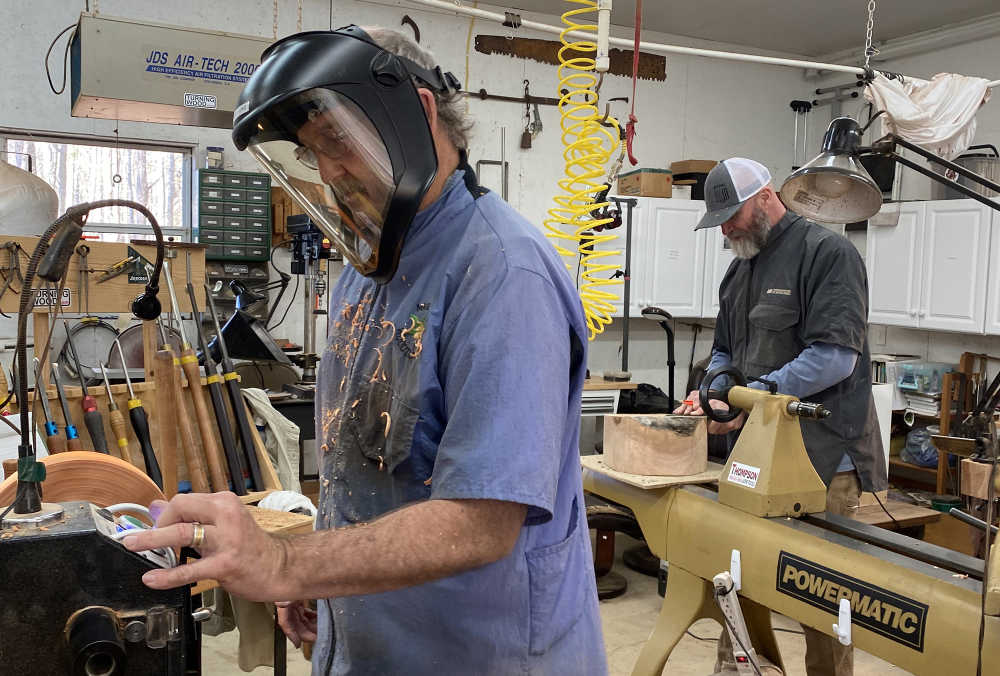Introduction:
Sammy Long and Craig Killens met each other weekly in Long’s woodturning workshop for Killens’ apprenticeship lessons. While Long has been woodturning for quite some time and serves as the master artist in this relationship, Killens has always had an interest in art and creation. Killens says that he became interested in pottery during college, but couldn’t convince himself to sign up for the class. Years later, he attempted to rekindle his relationship with art through woodturning. After joining the Magnolia Woodturners, he met Sammy Long–a turner who has mentored many of the club members.
Master Artist: Sammy Long
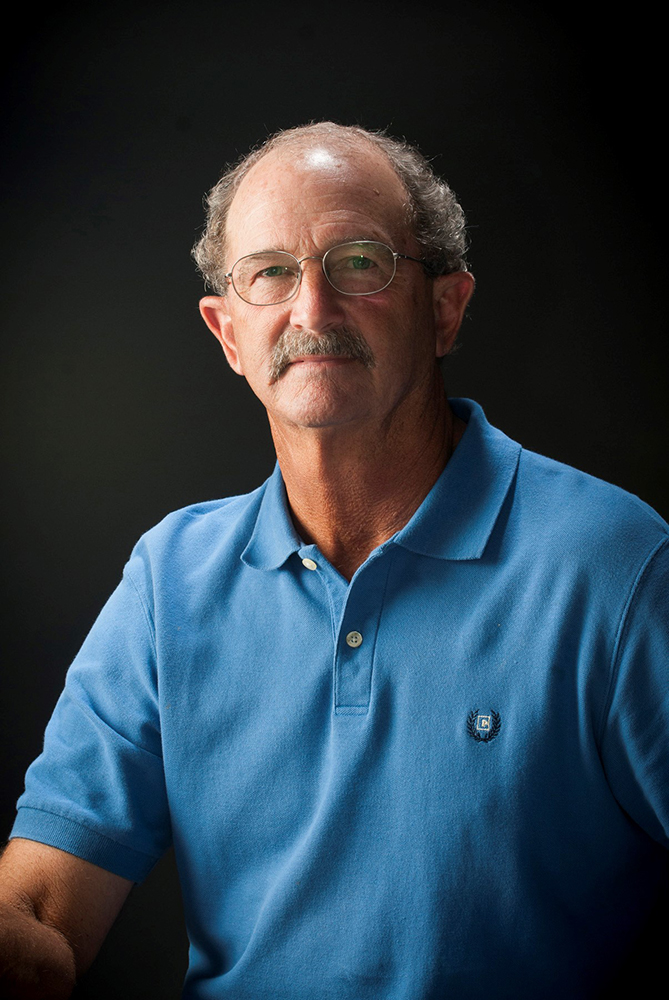
Above (main image): Sammy Long (left) and Craig Killens working together during one of their apprenticeship sessions.
Photo courtesy of the artists.
Right: Sammy Long
Photo by Roy Adkins of Light and Glass Studio
"I get a good high at the end of the week when my students have a finished product. It makes you feel good and warm and fuzzy on the inside."
Sammy Long began woodturning twenty years ago after being gifted a wood lathe (a motorized machine that spins wood) by his father-in-law. Although he was initially nervous about learning the craft of woodturning, his wife Maureen eventually signed him up for his first turning class at the Appalachian Center for Craft in Tennessee. After this experience, Long decided to further his knowledge by attending the Magnolia Woodturners club meetings every Saturday. Developing as a turner, Long began making candlesticks, pens, baby rattles, and pots. He also continued to attend the Appalachian Center for Craft every summer–bringing Mississippi-based turners along with him for the opportunity to learn together and bring new ideas back to the Magnolia Woodturners meetings.
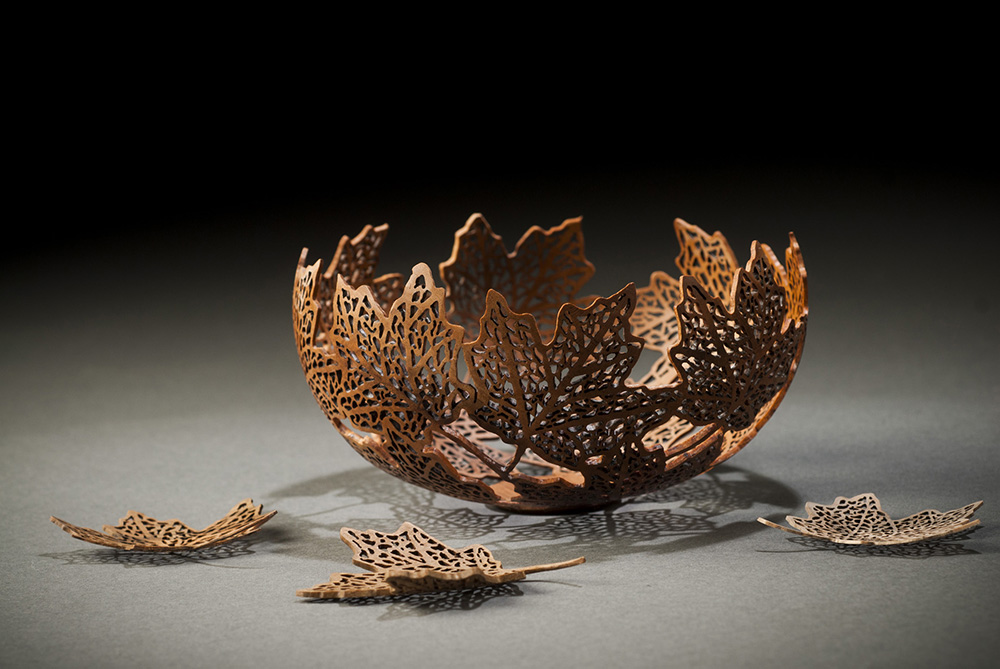
Left: Sammy Long’s turned leaf vessel
Photo by Roy Adkins of Light and Glass Studio.
After developing his craft, Long began to sell his work around the state and teach other hopeful turners. He has also been recognized and granted awards by craft organizations such as the Tennessee Association of Woodturners and Kentucky’s Glema Mahr Center for the Arts. Long has discovered that teaching is his favorite part of his woodworking journey.
I love it. I love doing what I do. I love seeing the appreciation of when people pick it up and ooh and awe, but being able to teach it and share with someone else is very important to me. I get a good high at the end of the week when my students have a finished product. It makes you feel good and warm and fuzzy on the inside.
So when Killens approached Long with hopes of applying to the 2022 Folks Arts Apprenticeship program together, there was no hesitation on his part to agree to another opportunity to teach.
Apprentice: Craig Killens
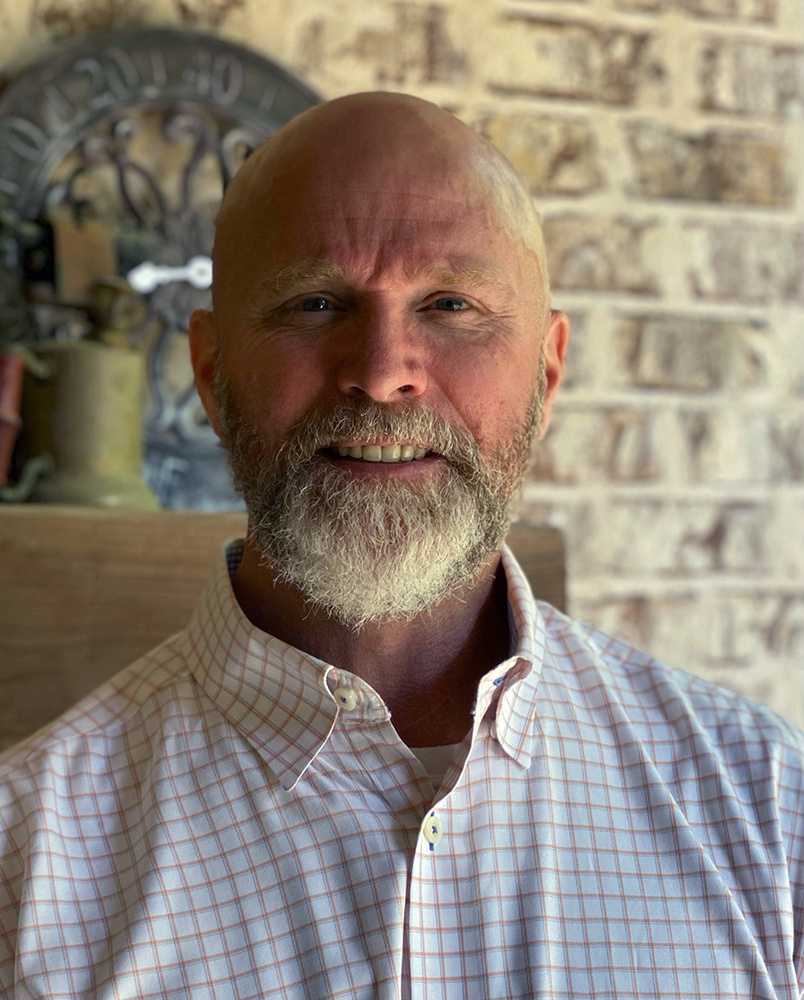
Right: Craig Killens
Photo courtesy of the artist
Always having an interest in woodwork, Killens eventually built an at-home shop where he began to make rustic, wooden furniture. One of the first things he made in his shop was a king sized bed. He was shocked and humbled to learn that people were interested in this piece of work because he had no “formal” training. The interest in his work inspired Killens to regularly build furniture.
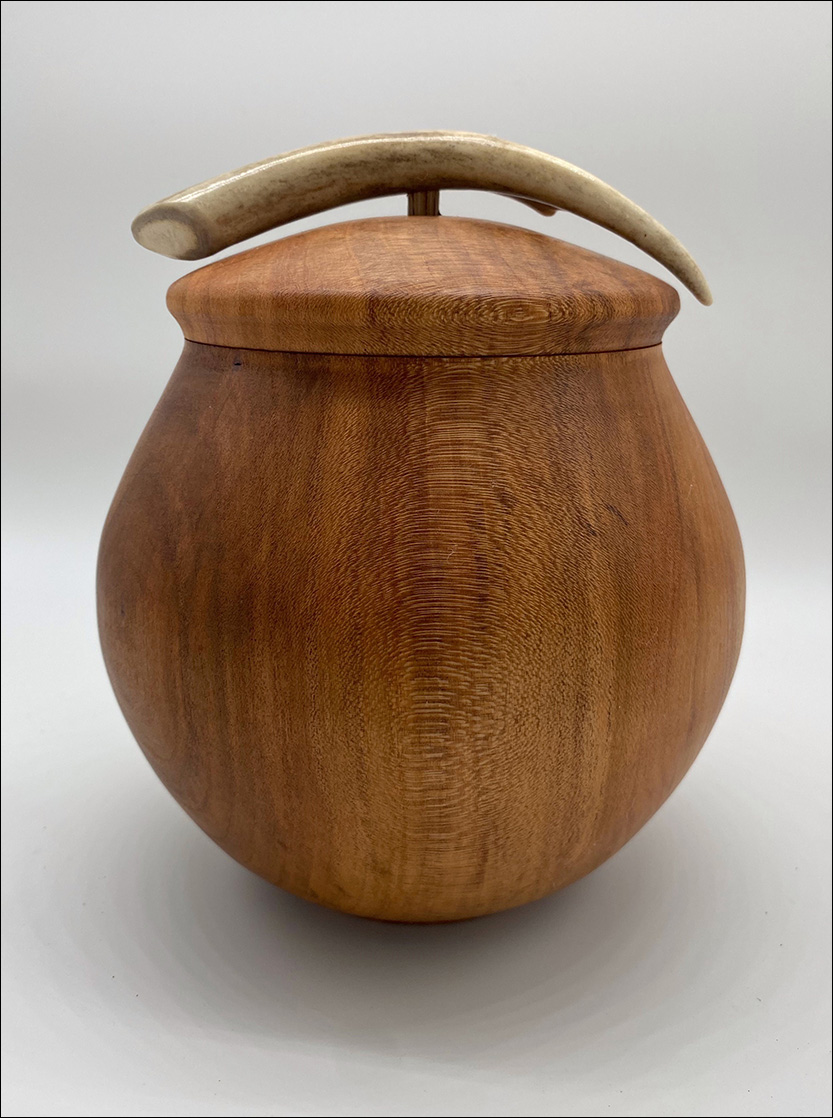
Left: Vase turned by Craig Killens
Photo courtesy of the artist
After building furniture for some time, Killens developed an interest in woodturning. He was advised to join a club since he would likely meet and be mentored by more experienced turners. Killens joined the Magnolia Woodturners club, borrowed a wood lathe, and began learning the craft of turning.
“I had the best teacher our area has to offer.
I am very happy that I have had this opportunity.”
Although initially learning from turners on YouTube, Killens soon realized that he needed more help with the basics–mainly proper tool control. He noticed that Long was one of the most experienced and sought after members in the club. He approached Long with a wish to serve as his apprentice.
Apprenticeship Experience:
Killens learned a great deal from Long during the apprenticeship. Although he envisioned advanced training, he soon realized he needed to revisit the basics–particularly skills such as tool sharpening and learning to develop form for bowls, boxes, vases and ornaments.
According to Long, there are a few characteristics woodturners look for when selecting materials for a project. Although one could select from hard or soft wood, turners typically gravitate towards soft wood because it is easier to “turn” or shape into the desired object. Turners also have to consider the differences in working with dry and green wood. Dry wood is what one might buy in stores, while green wood still has moisture in it, so it is more pliable. Long says that turners will often harvest and clean their own wood because it is free, it is easier to shape, and, most importantly, one cannot buy wood that is 80 inches square and 10 inches long–the amount of wood a turner might need for a project.
When asked what he gains from taking on students and apprentices, Long says the following:
This is my second apprenticeship, but every time I teach I learn more and more about teaching. I tend to skip the basics because I assume the student might know, but each time I teach I learn to better myself as an instructor to make it easier for them. I remember how hard it was to turn a bowl when I did not have all the steps in front of me. So what I gain is to learn how to better teach the art of woodturning.
.JPG)
Right: Sammy Long’s work on display at the 2022 Folk Arts Apprenticeship showcase at the Two Mississippi Museums
Photo by Maria Zeringue, courtesy of the Mississippi Arts Commission
Conclusion:
Speaking on his experience, Killens states, “I had the best teacher our area has to offer. I am very happy that I have had this opportunity.” He also hopes he has the opportunity to pass along the craft of woodturning one day. He says the following:
I can’t wait to be there one day. I’m my biggest critic and I have had folks ask me to teach them woodturning, but I turned them down because I don’t feel like I’m qualified. I don’t want to teach someone a bad habit. I can teach them how to turn a bowl or make a pen, but not [anything] beyond that. But [teaching’s] my goal at the end of the day. I want to be the guy that Sammy is in our shop now—the person that people turn to for questions and answers, but I’m a long ways from that. I just started a bit late. I’m 57 now and I should've started when I was 25 or 30.
To which Long replies, “Never too late. Never too late.”

